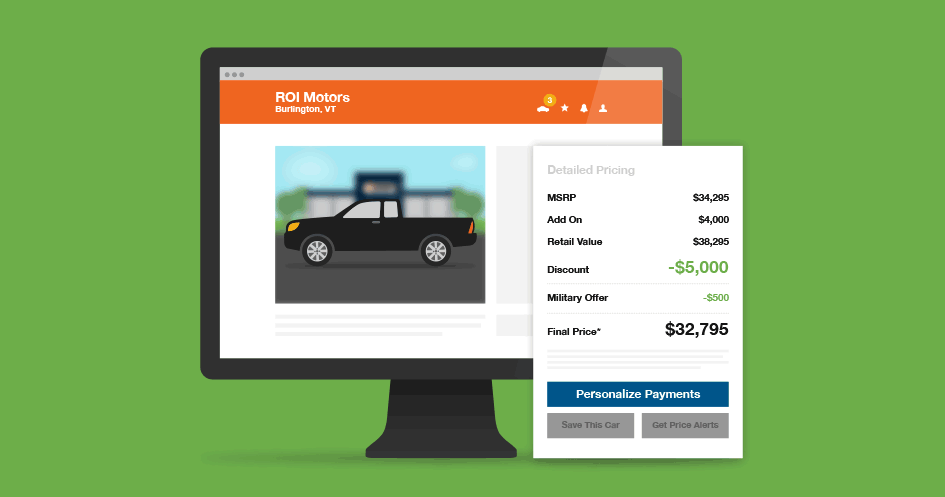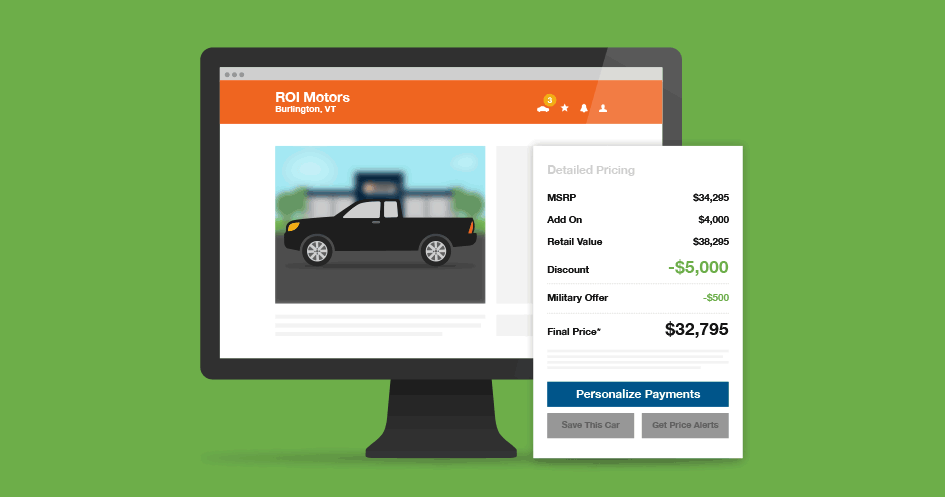
Click for ePrice.
Show discounts, rebates, and MSRP.
Present only your asking price.
Display all of the pricing: MSRP, discounts, and add-ons.
Don’t show any pricing and just include a “call to inquire” button.
The combinations for displaying your inventory’s prices seem practically endless. And rightly so. Inventory pricing, and how your website displays it to the shopping public, is an important part of your sales strategy.
Depending on what you would like your shoppers to do next, you’re faced with multiple decisions. Are you displaying all of the pricing information – discounts, rebates, and add-ons, to name a few – in an attempt to build trust with and empower your shoppers? Or is your goal to gather consumer information so that your sales team can close the deal once shoppers are convinced to come in to the showroom? Or, does your strategy fall somewhere in between?
Whichever your strategy, your website should have the flexibility to accommodate any pricing equation – and give you the control to make changes yourself – to effectively advertise inventory to your shoppers.
In the past, website providers have offered only narrow pricing display options and very limited control, given the complexities of dealer-by-dealer marketing strategies and states’ various sales compliance rules. But as these rules have evolved, it’s become clear that limited pricing display parameters restrict dealerships because they diminish the multiple pricing combinations that dealers would otherwise use to their benefit.
With more inventory pricing display options and autonomy, dealers are empowered to show more of the price/cost breakdown to shoppers. Here are just a few combinations which become possible with flexible inventory pricing displays:
1. A-B+C = D – Show a discount first and then an ‘add-on’ value:
Example:
MSRP: $32,000
Discount of – $1,000
Retail Value: $31,000
Add On of $3,000
Internet Price: $34,000
2. A-B-C = D – Show two potential discounts fields or combine two discounts:
Example:
MSRP: $32,000
Discount – $1,000
Retail Value: $31,000
Discount – $2,000
Internet Price: $29,000
3. A+B-C = D – Show an add-on and a discount field; showing middle price is optional:
Example:
MSRP: $32,000
Add On + $3,000
Retail Value: $35,000
Discount – $1,000
Internet Price: $34,000
4. A+B+C = D – Show the sum of all options:
Example:
MSRP: $32,000
Add On + $1,000
Retail Value: $33,000
Add On + $2,000
Internet Price: $35,000
Your pricing strategy is your business. Giving you the flexibility and control to display your inventory pricing should be the job of any website provider.
Comment below to share how inventory pricing display flexibility might make significant changes to your sales strategy. As always, we are happy to connect for a strategic consultation.






